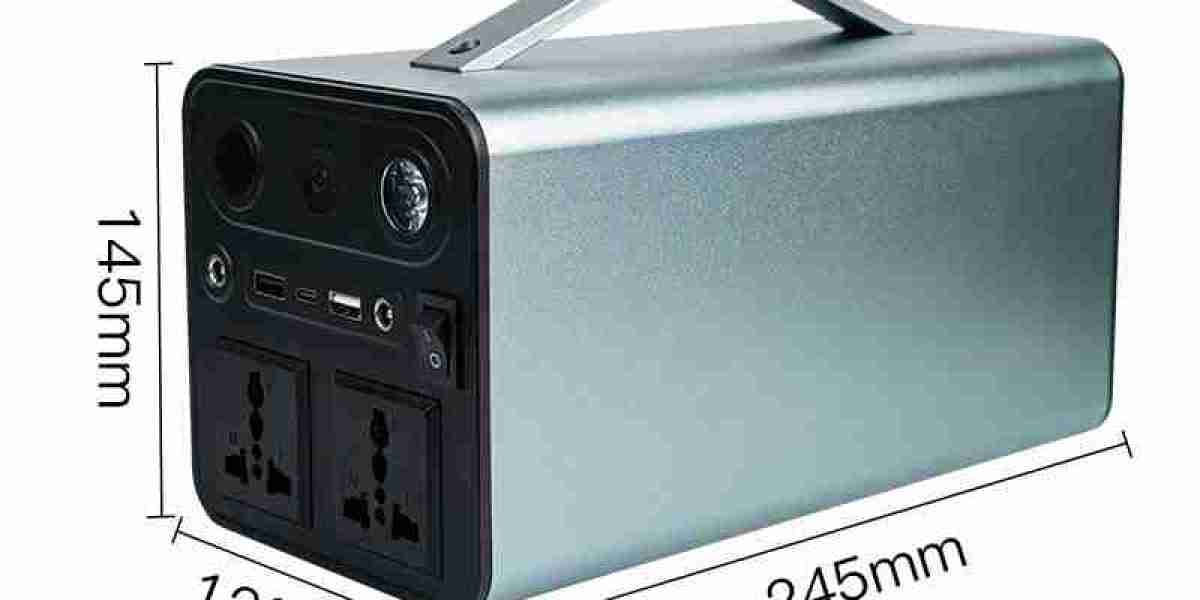The portable power station market has transitioned from a niche segment into a prominent category within the broader energy storage ecosystem. As homes, businesses, and adventurers seek cleaner, quieter alternatives to traditional fuel-based generators, portable power solutions are emerging as vital energy enablers.
Market Structure and Product Typology
Portable power stations are compact energy storage units designed to deliver AC and DC output for a variety of applications. They typically feature lithium-ion or lithium iron phosphate (LiFePO4) batteries and support charging via wall sockets, car ports, or solar panels.
The market is categorized by:
Power Capacity: Ranging from under 500Wh to over 1500Wh
Technology: Li-ion vs. LiFePO4
Charging Method: AC, solar, car, and dual-input hybrids
Application: Residential, commercial, outdoor, and industrial
Core Demand Segments
Residential Backup: In urban settings and disaster-prone regions, households are using portable power stations as backup during outages.
Outdoor and Recreational Use: Campers, hikers, and van-life travelers favor compact models for their reliability and solar-charging options.
Remote Work and Commercial Use: Technicians, healthcare workers, and journalists rely on portable power in off-grid or mobile environments.
These segments are expanding as consumers demand more autonomy and resilience in power access.
Technological Evolution
The shift to LiFePO4 batteries has significantly improved safety, battery life, and thermal stability. Additionally, modern devices offer:
Pure sine wave AC output for sensitive electronics
Real-time digital monitoring displays
Bluetooth and app-enabled control
Solar input compatibility for sustainable charging
This tech-forward shift is making portable stations attractive not only as emergency tools but as primary energy companions in daily life.
Regional Market Overview
North America: Leading adoption, driven by weather-related power disruptions, RV culture, and off-grid living.
Europe: Strong growth tied to eco-conscious consumers and mobile professionals.
Asia-Pacific: Rapid adoption in emerging economies with inconsistent grid access.
Latin America & Africa: Market in nascent stages but expected to grow as renewable infrastructure develops.
Each region presents unique drivers, with regulatory incentives and public awareness playing key roles.
Key Market Participants
The market is moderately consolidated with a mix of startups and established consumer electronics companies. Competitive edges are built around:
Battery chemistry
Port design and portability
Input/output versatility
After-sales service and warranty
Companies that can combine solar integration, affordability, and smart features are capturing greater market share.
Consumer Behavior Trends
Today’s buyers prioritize:
Eco-friendliness and silent operation
Lightweight form factors
Fast-charging support
Modular expandability
As consumer education grows, preferences are shifting toward units with long cycle life, user-friendly interfaces, and flexible charging options.
Market Growth Catalysts
Increasing frequency of extreme weather events
Remote and hybrid work models
Rising outdoor recreational activities
Cost reduction in lithium and solar components
Increasing need for mobile healthcare and emergency response infrastructure
These factors are reinforcing the relevance of portable power across a wide spectrum of uses.
Roadblocks to Growth
Despite strong potential, some market challenges persist:
High initial cost of high-capacity units
Limited product availability in rural and developing areas
Lack of standardization in safety and performance certification
However, these barriers are slowly being addressed through broader manufacturer participation and government interest in green tech solutions.
Market Outlook from Overview
In the coming years, the portable power station market is poised to benefit from broader decentralization of energy generation and consumption. Integration with smart homes, electric vehicles, and solar microgrids will push the market into new functional territories.
Product innovations and cross-industry collaborations will likely set the pace of growth, helping these devices evolve from backup solutions to core energy infrastructure tools.
In essence, the market overview underscores a paradigm shift in how individuals and institutions perceive and consume portable energy, establishing a strong foundation for the next wave of innovation and global adoption.




